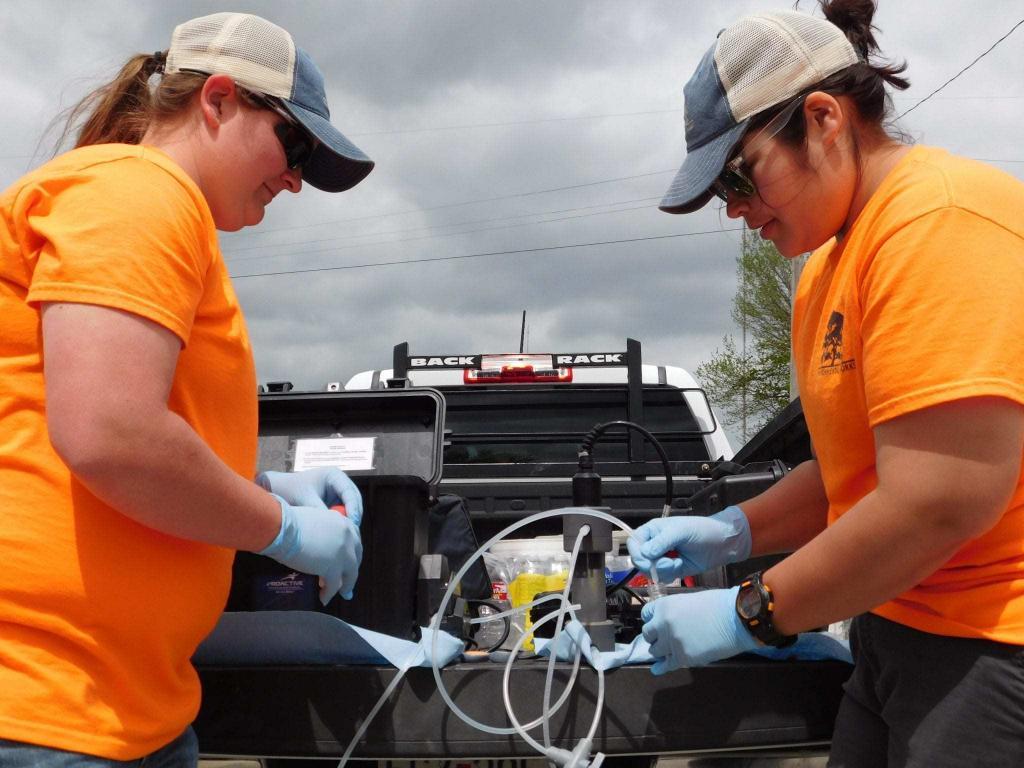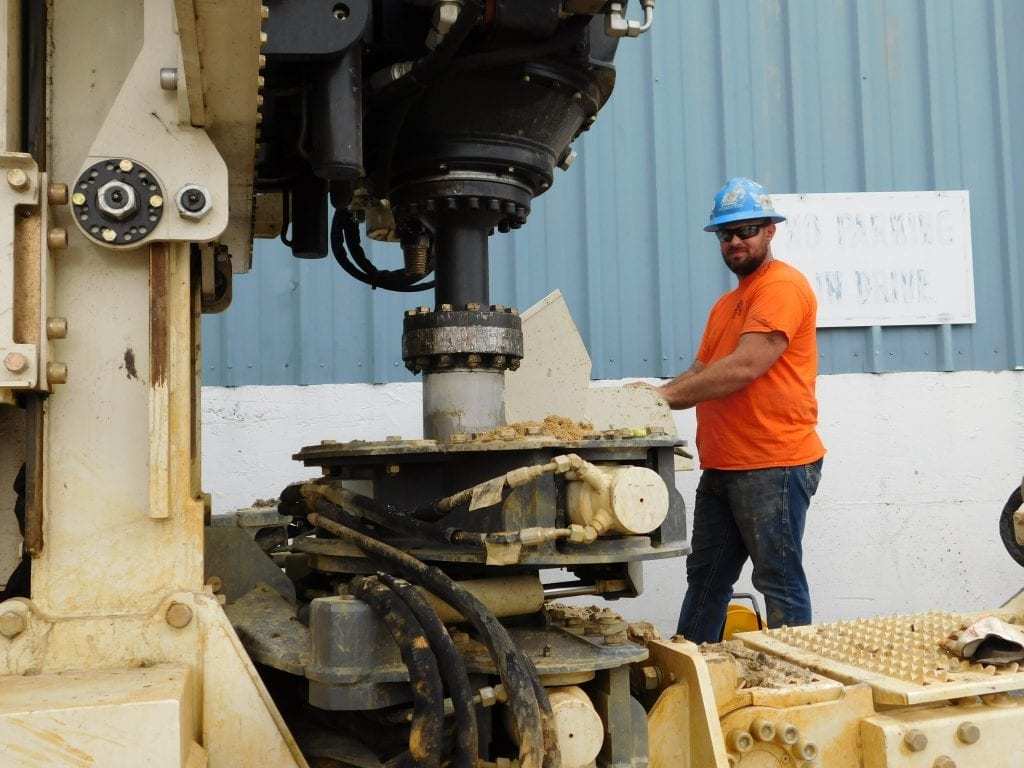The efficiency and effectiveness of Environmental Works’ remediation team was recently on full display at a Brownfields project site in southwest Missouri.
 The team was conducting site characterization and investigation for a client at two separate properties. At one site, a group of scientists sampled monitoring wells for groundwater contamination, while at the other site EWI’s drilling team used a sonic drilling rig to deepen a set of existing monitoring wells into bedrock for delineation purposes.
The team was conducting site characterization and investigation for a client at two separate properties. At one site, a group of scientists sampled monitoring wells for groundwater contamination, while at the other site EWI’s drilling team used a sonic drilling rig to deepen a set of existing monitoring wells into bedrock for delineation purposes.
During site characterization, it is standard to do both groundwater monitoring and soil sampling to delineate impact in all forms of media, according to Bobbilynne Koepke, a Senior Project Manager in the Investigation and Remediation Department at EWI.
Koepke says the delineation was necessary at the second site because chlorinated solvents had been detected in one of the central monitoring wells, and chlorinated solvents sink.
“We had to do a shallow bedrock investigation with our sonic drill to make sure chlorinated solvents hadn’t made it into the bedrock at the surrounding wells,” she says. “If you see contamination in the deepest monitoring well, all the monitoring wells around that one need to target that same depth.”
The associate scientists were able to sample all of their monitoring wells in less than a day, while the drilling team installed three 30-foot wells in a day and a half. Needless to say, they all worked quickly, efficiently and effectively.
Just the First Step
This round of site characterization is just part of a bigger Brownfields remediation project EWI is conducting for the client.
The business that owned the two properties was transferring ownership, and an environmental site assessment was conducted as part of the sale. Another environmental consulting company conducted a Phase II Environmental Assessment of the property, which “indicated concentrations of concern in the soil and groundwater,” says Koepke. At this point, site characterization was needed, and someone on the purchasing side recommended EWI.
“Apparently they said, ‘they’re not the cheapest, but they do a really, really good job,’” says Koepke.
EWI was contracted to work on the two properties in December 2017, and started soil sampling and installing monitoring wells in spring 2018. Since the potential contamination found at the properties was historical in nature and not caused by the current property owners, EWI’s remediation team moved to enroll the properties in the Missouri Department of Natural Resources’ Brownfields Voluntary Cleanup Program (BVCP).
“To be eligible for the BVCP program, you have to be able to show that the current owner wasn’t responsible for causing the contamination,” says Koepke.
EWI wrote a Brownfields work plan for both properties, and, since there was a time crunch with the business transaction, pushed for an expedited review. The BVCP came back with an approval of the plan in less than 30 days, and EWI’s remediation team went to work.
Plume Stability and Further Remediation
For the site where groundwater sampling was being done, EWI has already completed delineation and performed a Tier 1 Risk Assessment to show that no current or future risks are present, based on the data collected. “This puts the site in ‘plume stability’ mode, where we conduct quarterly groundwater sampling until we have enough data to show that the plume is stable, decreasing, or increasing, using statistical methods,” said Koepke.
As for the other property, EWI has been able to fully delineate impact to a small area of the site and determine that no current risks to employees or off-site risks are present; however, contamination readings were high enough that some form of remediation will be needed.
“We’re currently evaluating different remedial technologies, to determine the most effective option for the site,” says Koepke. “We’re working closely with the client and with the BVCP Project Manager so that everyone has buy-in on the decision process, which really helps to expedite the process.”
EWI has completed hundreds of site restoration initiatives, revitalizing Brownfields in partnership with the EPA and local and state governments.




